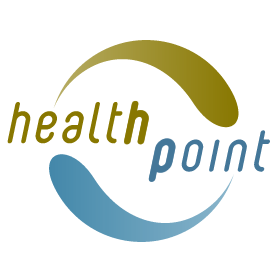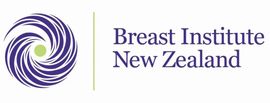Hutt > Private Hospitals & Specialists >
Breast Institute New Zealand
Private Service, Breast, Radiology
Description
Breast Institute New Zealand is a private breast clinic located in Lower Hutt, Wellington offering the latest 3D Mammogram technology. We are committed to providing personalised, proactive breast health care in a calming, warm environment, no matter where you are on your breast care journey.
Our radiologist, Dr Monica Saini, is an internationally recognised expert experienced in clinical practice, doctor and patient education, breast cancer research and product development.
Our services include:
- 3D Screening & Diagnostic Mammograms
- Diagnostic & Screening Breast Ultrasound
- Contrast Enhanced Mammography
- Interventional Breast Biopsy - Ultrasound guided and Stereotactic
- Breast Health Consultation
- Breast Cancer Risk Assessment
- Second Opinion Service
- On-site Breast Surgeon available for consult
Consultants
-
Dr Monica Saini
Breast Radiologist
Referral Expectations
Find out what to expect at your appointment here
Fees and Charges Description
Click on the link for pricing information
Hours
Monday: Closed
Tuesday: 8.30am - 5pm
Wednesday: 8.30am - 5pm
Thursday: 8.30am - 5pm
Friday 8.30am - 5pm
Saturday: Closed
Sunday: Closed
*The clinic will also be closed on all public holdays
Procedures / Treatments
A mammogram is a special type of x-ray used only for the breast. Mammography can be used either to look for very early breast cancer in women without breast symptoms (screening) or to examine women who do have breast symptoms (diagnostic). 3D Tomosynthesis mammography further enhances the ability to detect cancer by generating a "3D" view of the breast which enables the Radiologist to detect cancers which may be otherwise obscured. What to expect? You will need to undress from the waist up. One of your breasts will be positioned between two plastic plates which will flatten the breast slightly. Most women find that this is a bit uncomfortable, but not painful. Generally two x-rays are taken of each breast. It is also useful to compare the results with earlier examinations and you should take any previous mammography results with you.
A mammogram is a special type of x-ray used only for the breast. Mammography can be used either to look for very early breast cancer in women without breast symptoms (screening) or to examine women who do have breast symptoms (diagnostic). 3D Tomosynthesis mammography further enhances the ability to detect cancer by generating a "3D" view of the breast which enables the Radiologist to detect cancers which may be otherwise obscured. What to expect? You will need to undress from the waist up. One of your breasts will be positioned between two plastic plates which will flatten the breast slightly. Most women find that this is a bit uncomfortable, but not painful. Generally two x-rays are taken of each breast. It is also useful to compare the results with earlier examinations and you should take any previous mammography results with you.
A mammogram is a special type of x-ray used only for the breast. Mammography can be used either to look for very early breast cancer in women without breast symptoms (screening) or to examine women who do have breast symptoms (diagnostic).
3D Tomosynthesis mammography further enhances the ability to detect cancer by generating a "3D" view of the breast which enables the Radiologist to detect cancers which may be otherwise obscured.
What to expect?
You will need to undress from the waist up. One of your breasts will be positioned between two plastic plates which will flatten the breast slightly. Most women find that this is a bit uncomfortable, but not painful. Generally two x-rays are taken of each breast. It is also useful to compare the results with earlier examinations and you should take any previous mammography results with you.
In ultrasound, a beam of sound at a very high frequency (that cannot be heard) is sent into the body from a small vibrating crystal in a hand-held scanner head. When the beam meets a surface between tissues of different density, echoes of the sound beam are sent back into the scanner head. The time between sending the sound and receiving the echo back is fed into a computer, which in turn creates an image that is projected on a television screen. Ultrasound is a very safe type of imaging; this is why it is so widely used during pregnancy. What to expect? After lying down, the area to be examined will be exposed. Generally a contact gel will be used between the scanner head and skin. The scanner head is then pressed against your skin and moved around and over the area to be examined. At the same time the internal images will appear onto a screen.
In ultrasound, a beam of sound at a very high frequency (that cannot be heard) is sent into the body from a small vibrating crystal in a hand-held scanner head. When the beam meets a surface between tissues of different density, echoes of the sound beam are sent back into the scanner head. The time between sending the sound and receiving the echo back is fed into a computer, which in turn creates an image that is projected on a television screen. Ultrasound is a very safe type of imaging; this is why it is so widely used during pregnancy. What to expect? After lying down, the area to be examined will be exposed. Generally a contact gel will be used between the scanner head and skin. The scanner head is then pressed against your skin and moved around and over the area to be examined. At the same time the internal images will appear onto a screen.
In ultrasound, a beam of sound at a very high frequency (that cannot be heard) is sent into the body from a small vibrating crystal in a hand-held scanner head. When the beam meets a surface between tissues of different density, echoes of the sound beam are sent back into the scanner head. The time between sending the sound and receiving the echo back is fed into a computer, which in turn creates an image that is projected on a television screen. Ultrasound is a very safe type of imaging; this is why it is so widely used during pregnancy.
What to expect?
After lying down, the area to be examined will be exposed. Generally a contact gel will be used between the scanner head and skin. The scanner head is then pressed against your skin and moved around and over the area to be examined. At the same time the internal images will appear onto a screen.
Read about contrast-enhanced mammography here
Read about contrast-enhanced mammography here
Read about contrast-enhanced mammography here
Open Excisional: a small incision (cut) is made as close as possible to the lump and the lump, together with a surrounding margin of tissue, is removed for examination. If the lump is large, only a portion of it may be removed. Core Needle Biopsy: this involves inserting a needle through your skin into the breast lump and removing a sample of tissue for examination.
Open Excisional: a small incision (cut) is made as close as possible to the lump and the lump, together with a surrounding margin of tissue, is removed for examination. If the lump is large, only a portion of it may be removed. Core Needle Biopsy: this involves inserting a needle through your skin into the breast lump and removing a sample of tissue for examination.
Open Excisional: a small incision (cut) is made as close as possible to the lump and the lump, together with a surrounding margin of tissue, is removed for examination. If the lump is large, only a portion of it may be removed.
Core Needle Biopsy: this involves inserting a needle through your skin into the breast lump and removing a sample of tissue for examination.
Book an ultrasound examination and consultation for Breast Pain performed by Dr Monica Saini. Results and recommendations for breast pain reduction will be discussed with you at the time of the exam.
Book an ultrasound examination and consultation for Breast Pain performed by Dr Monica Saini. Results and recommendations for breast pain reduction will be discussed with you at the time of the exam.
Dr Saini will take your history and do a physical exam and calculate your risk factors for breast cancer. Your risk score and breast density will be reviewed with you and a personalised screening regimen and recommendations will be discussed with you at the time of the exam. A copy of the report will be sent to your GP.
Dr Saini will take your history and do a physical exam and calculate your risk factors for breast cancer. Your risk score and breast density will be reviewed with you and a personalised screening regimen and recommendations will be discussed with you at the time of the exam. A copy of the report will be sent to your GP.
Dr Saini will take your history and do a physical exam and calculate your risk factors for breast cancer. Your risk score and breast density will be reviewed with you and a personalised screening regimen and recommendations will be discussed with you at the time of the exam. A copy of the report will be sent to your GP.
Document Downloads
-
Electronic Referral Form
(PDF, 178.3 KB)
Please use to complete a GP Referral by filling in fields in an Adobe PDF document.
Travel Directions
The Breast Institute is located on High Street, Lower Hutt, beside the High Street Health Hub.
Car parking is available onsite or there are bus stops and train stations within easy walking distance.
Parking
Patient parking is provided
Pharmacy
There is a pharmacy next door in the High Street Health Hub.
Website
Contact Details
-
Phone
0800 848 844
Healthlink EDI
breastnz
Email
Website
Make a booking here
583 High Street
Lower Hutt
Wellington 5010
Street Address
583 High Street
Lower Hutt
Wellington 5010
Postal Address
583 High Street
Boulcott
Lower Hutt 5010
Was this page helpful?
This page was last updated at 11:47AM on May 28, 2024. This information is reviewed and edited by Breast Institute New Zealand.

